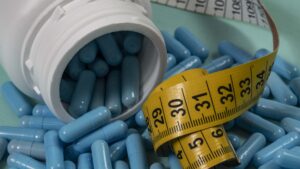Rolls-Royce (LSE: RR) shares took to the skies on 26 July after the FTSE 100 company issued a bullish trading update. The 20% one-day rise means the share price has now more than doubled over the last year.
In the update, the firm said its upcoming first-half financial results are now expected to be “materially above” consensus expectations. As a result, it raised its full-year guidance, which was music to investors’ ears.
Specifically, underlying operating profit and free cash flow will be higher than expected. This is significant given that the company is “committed to resuming shareholder payments” at some point.
Back in the day, Rolls-Royce was actually a dividend darling, rewarding shareholders throughout the 1990s and into the new millennium. And prior to the pandemic, the firm had a 10-year track record of payments.
After this trading update, is the dividend about to make a swift return?
Ongoing progress
For the full year, management now expects underlying operating profit of £1.2bn to £1.4bn. And free cash flow is expected to come in between £0.9bn and £1.0bn. These figures are significantly higher than the previous consensus estimates.
This improved guidance is due to ongoing strength in its Civil Aerospace division, where higher aftermarket profitability is being driven by a post-Covid recovery in international travel. Rolls makes a big chunk of its money servicing and maintaining wide-body engines based on their flying hours.
Meanwhile, its Defence unit, which makes propulsion systems for warships and submarines, is generating strong revenue growth as global military spending rises. This, along with higher prices and cost efficiencies, is driving higher margins.
Dividends on the horizon?
Rolls-Royce ceased dividend payments in 2020 to protect its balance sheet, which was loaded with lots of debt to survive the pandemic.
Since then, the company has disposed of certain assets to help pay down this debt. However, there’s only so much a firm can sell off without impairing growth.
So, it’s very encouraging to see the firm generating positive free cash flow again. This is the amount a company has left over after it has paid for everything it needs to continue operating. This cash can be used to pay down debt and, importantly, can also be used for dividend payments.
Currently, analysts have a 1.58p per share dividend pencilled in for next year. That anticipated payment would be covered more than four times by expected earnings, providing a solid base to materially increase payouts.
As things stand, that would give the stock a modest forward yield of about 1%. Therefore, though I think payouts will resume in 2024, we’re still a long way from calling the company a dividend darling again.
Final thoughts
On a forward-looking P/E multiple, the stock is more than double the market average. But it’s been a slippery exercise valuing the company so far, and I don’t expect that to change.
Plus, the company still had net debt of £3.3bn as of December. Servicing that debt pile could become a problem if the company’s turnaround stalls.
Long term, though, I’m bullish on the shares, which I bought back in March. And I’ll be holding onto those, with or without a dividend.
This post was originally published on Motley Fool





